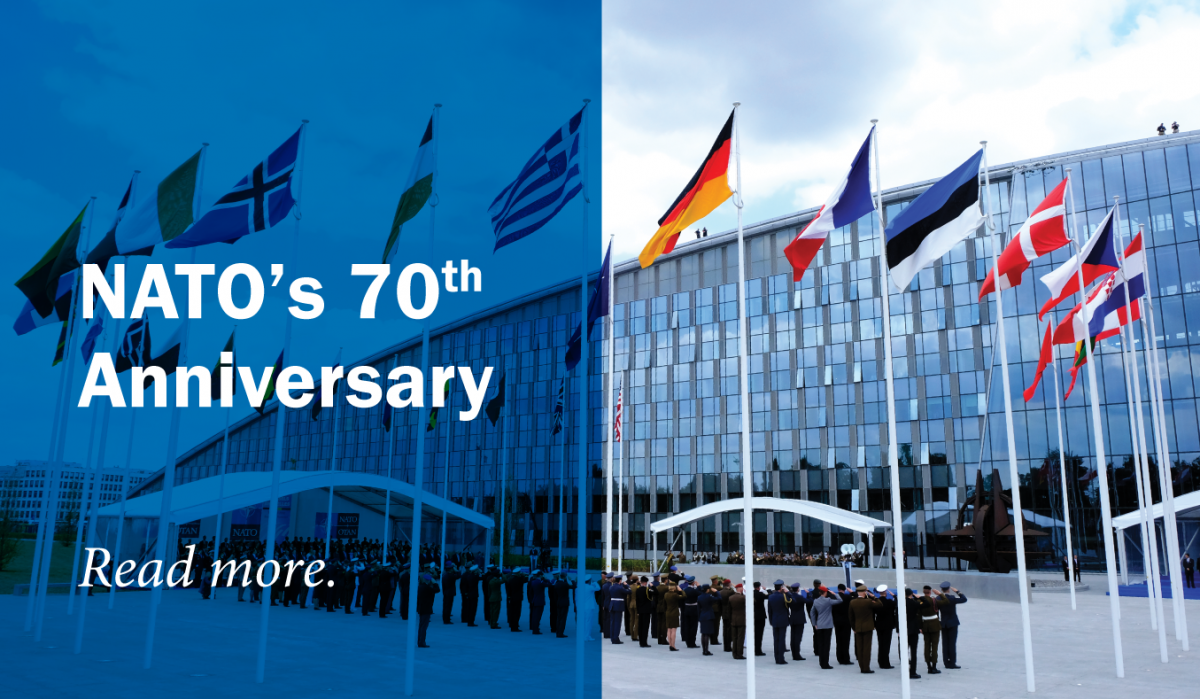Security Matters to the Western Balkans
"With Slovenia, Croatia, Albania, and Montenegro in, and North Macedonia soon joining, NATO has successfully incorporated the northern Mediterranean coast and secured its southeastern flank." – Gordana Delić
 As NATO members meet in Washington to celebrate the alliance’s 70th anniversary, their goal is to project political unity. Given the global geopolitical challenges they face, this may not be an easy task. Globalization has turned into a sort of regionalization with competing rising powers, opening the door to a multipolar world that will require NATO to transform itself into a much more flexible, diverse, and ever-learning mechanism.
As NATO members meet in Washington to celebrate the alliance’s 70th anniversary, their goal is to project political unity. Given the global geopolitical challenges they face, this may not be an easy task. Globalization has turned into a sort of regionalization with competing rising powers, opening the door to a multipolar world that will require NATO to transform itself into a much more flexible, diverse, and ever-learning mechanism.
At the same time, despite the global challenges and even some disunity within the alliance, it keeps demonstrating its capacity to grow and expand when it comes to Southeastern Europe. With Slovenia, Croatia, Albania, and Montenegro in, and North Macedonia soon joining, NATO has successfully incorporated the northern Mediterranean coast and secured its southeastern flank.
The countries of the region have always been at the crossroads of continents and thus prone to threats one associates with this kind of multipolar world. Hence, for many of them NATO has become in recent years a prerequisite for their security, economic growth, and development. This is particularly obvious since the EU’s enlargement and even accession negotiation processes have been questioned and slowed down to a crawl.
The accession process for Montenegro and North Macedonia has had a transformative effect, allowing them to resolve decades-old problems. For the former, these were borders and maritime security while for the latter it made it possible to resolve the deadlock with Greece over the country’s name. It is reasonable to believe that NATO membership will have an immediate positive effect on both countries economically too. For example, Montenegro lives off foreign tourism and thus security is vital. It now can receive funding from the Science and Peace Security program and use NATO’s resources in emergency situations, as was the case with recent fires along its coasts. The same applies for foreign direct investment, especially from the EU, which still represents the largest business partner for all the countries in the region.
It is important, though, to note that Montenegro’s plan to join NATO triggered an internal process of public debates that heavily polarized people. The resentment over NATO’s intervention in 1999 lives on in parts of the region, including in Montenegro where almost 30 percent of the population consider themselves ethnic Serbs. Despite skeptics’ expectations to the contrary, Serbia acted responsibly and as a leader for the stability of the region by declaring no interest in interfering with the country’s internal debate and decision regarding NATO membership. The process was however, marked by foreign interference that Montenegro managed to overcome along with its internal challenging public debate.
Unlike most of the other Southeastern European countries, Serbia does not aspire to join NATO. Instead, it follows the path of military neutrality. With its geographical position and size, it is the key country in the Western Balkans. Centrally located, with the largest population and the greatest national and religious diversity of all the Western Balkan countries, it is vital to the region’s development, mobility, stability, and security. The NATO intervention in 1999 left a bitter taste in the mouth of a nation that considers itself a natural and traditional ally of the United States, Europe, and all who fought against imperialism, fascism and Nazism in World Wars. In 1999, the democratic elite of Serbia pleaded in an open letter for dialogue and diplomacy, knowing that the regime of President Slobodan Milosevic would only be reinforced by NATO’s air strikes. Exactly 20 years later, the topic remains controversial in the country and it will be for many years to come.
Since then, NATO and Serbia have walked a long and complicated road. Despite the resentment, Serbia is future-oriented and is therefore deepening its political dialogue and cooperation with NATO on issues of common security and interest. The country joined Partnership for Peace in 2006 and signed an Individual Partnership Action Plan in 2015. In 2018 Serbia hosted the first exercise organized by NATO’s Euro-Atlantic Disaster Response Coordination Centre as a platform for civilian first responders to learn from each other how they can save lives.
With no membership aspirations from Serbia, Kosovo and Bosnia and Herzegovina are the only countries in the Western Balkans that might become NATO members. However, both face huge challenges that hinder their integration. NATO has been present in Kosovo for 20 years with the KFOR international peacekeeping forces, and in Bosnia and Herzegovina since 1995 and the signing of the Dayton Peace accords with local headquarters and a high representative. Yet, neither country has managed to develop into a functioning transitional democracy.
NATO’s overall role has been strongly influenced by events in the Balkans over the past three decades and the region remains of special concern to it. Even though all the countries of the Western Balkans aspire to join the EU and are engaged with the alliance, the question of securing region’s long-term stability and security remains key and NATO shares responsibility in defining strategies and objectives to achieve it.
Read the full publication »
Photo Credit: Alexandros Michailidis / Shutterstock
